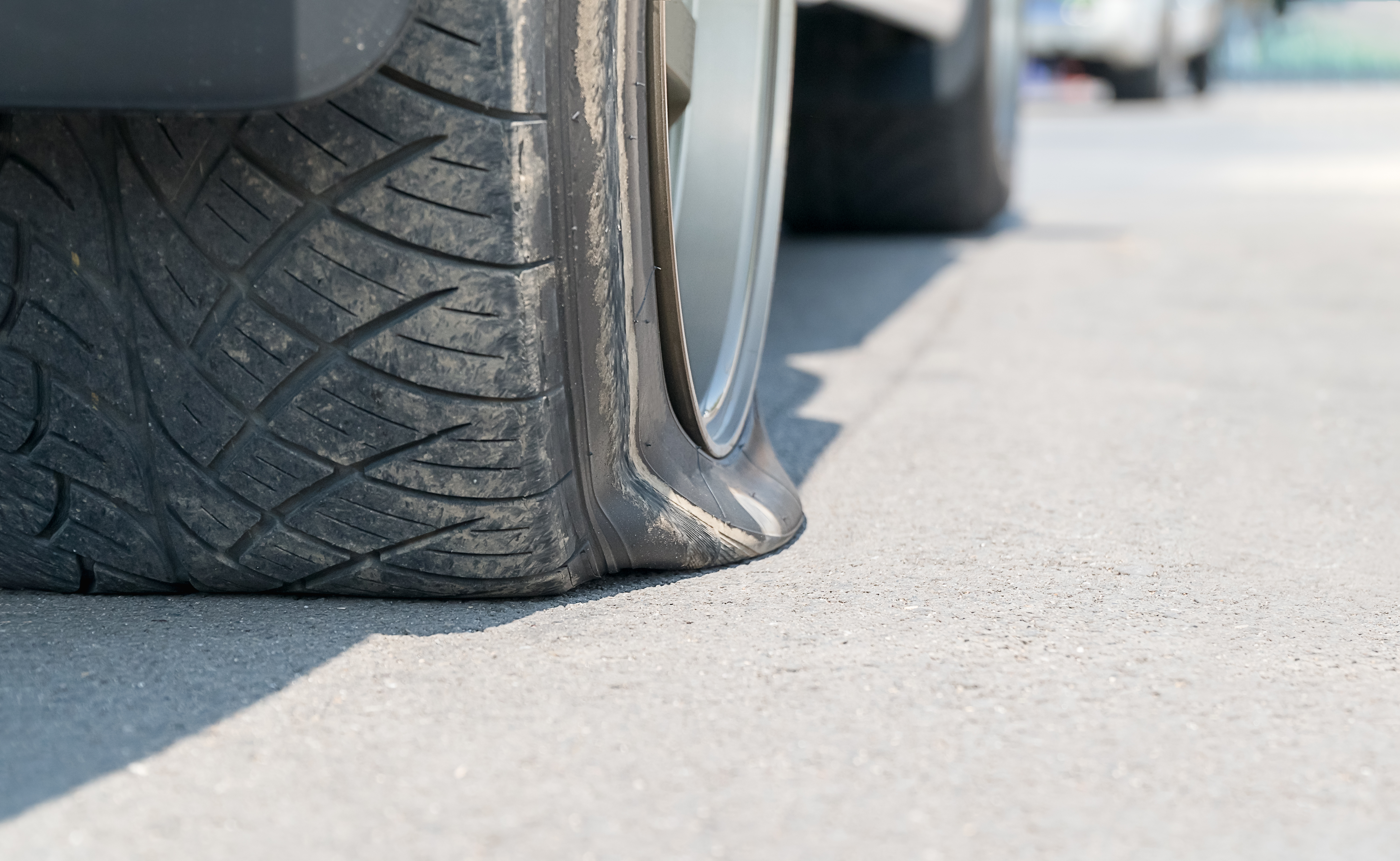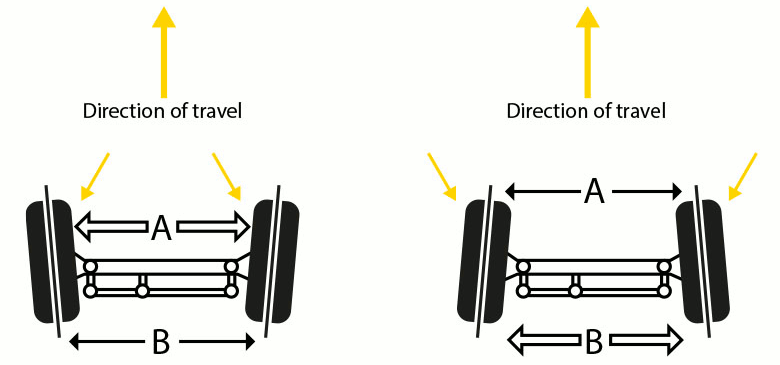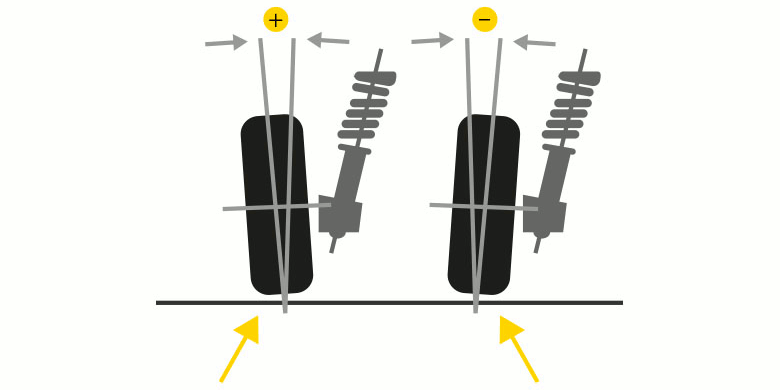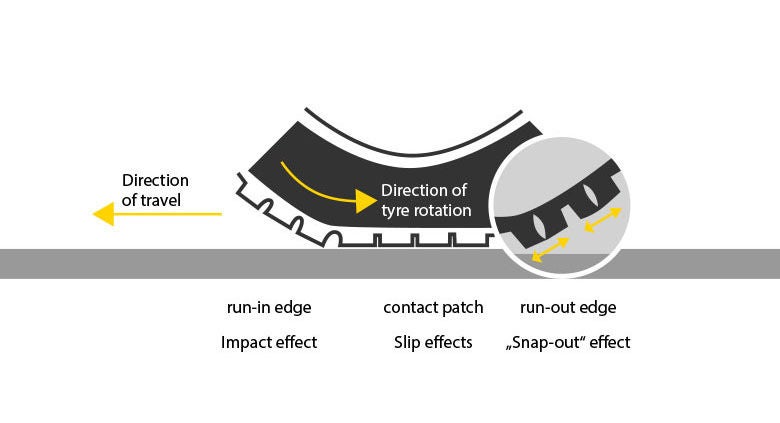
Even though the statistics say otherwise, it’s a concern all motorists have at some point: a hole in your tyre or your tyre bursts while you are driving. In truth, tyre breakdowns occur once every ten years or every 150.000 kilometres (95.000 miles), if at all. With the following tips, you can ease your mind and drive safely.

Preventing a flat tyre or puncture
Most tyre damages can be sourced to a single cause: inadequate tyre care and servicing. So not only are tyre breakdowns a rare occurrence – you can easily prevent them. The remaining few possible damages are outside influences you can’t always predict. Damaging items such as nails and glass, or even sudden breaking manoeuvres can always happen. In these cases, it’s good to know what to do with a flat tyre.
Our Expert's Advice:

Most people imagine a popped tyre to be incredibly big and dramatic – don’t worry, that doesn’t happen. What does happen is you will feel your steering become difficult, along with the feeling of driving over something bumpy. You may also hear the bumping. That’s your deflated tyre slapping on the ground. Just stay calm and pull over as soon as possible.
Tyre wear: The main reason for damaged tyres
The most important thing you need to know about tyre wear is that it cannot be prevented. It plays an elemental part in actually moving and stopping your vehicle. As a result, your tyres ideally would have a uniform wear pattern. What you can prevent is unwanted tyre wear, which may reduce your tyres’ service life. This will show in irregular wear patterns and increased wear.
Non-uniform tyre wear
Wear on the inner or outer tyre shoulder

If your tyres show a stronger wear on the inner or outer tyre shoulder, it can have two reasons: one is a positive or negative toe-in, the other is so-called camber. Both can be recognized by looking at the tyre position and angle when mounted.

When tyres have a positive or negative toe-in, they are not mounted in alignment to the vehicle, but at an angle. Seen from the top, a negative toe-in has tyres running wider at the front than at the back – this will show wear on the inner tyre shoulder. Meanwhile, a positive toe-in runs wider at the back than at the front, leading to more wear on the outer tyre shoulder.
Camber describes how the tyre is angled to the ground and on the suspension. When viewed from the front, the tyre won’t be straight, but tilted. Positive camber shows as wear on the outer tyre shoulder, while negative camber is visible as wear on the inner tyre shoulder.
While both camber and toe-in may seem like a mistake during tyre mounting, both can occur after certain driving behaviours. This includes kerb mounting and/or driving across speed bumps at higher speeds. Always make sure to take these hindrances with care and at an appropriate angle to preserve your tyres as long as possible.
Diagonal spot wear and saw-tooth wear
Diagonal spot wear may appear in conjunction with wear on inner and outer tyre shoulders. It’s common on tyres mounted on the nonpowered axle, which are also toed in. It usually only appears once on the tyre. To avoid this wear, the toe-in angle should be fixed by a garage. Additionally, you should rotate tyre positions.

The saw-tooth wear pattern appears during normal use, usually on tyres on the nonpowered axle. As the tyre rolls, the tread comes in contact with the ground – this is the contact patch. As it rolls further and the tread area loses contact, the single tread blocks rub against the surface before they snap back into their usual shape. The saw-tooth pattern refers to how the tread blocks are more worn on the back edge (in relation to tyre rotation) than on the front. If it only appears in small amounts, it’s normal. Should the wear be more conspicuous, it is advisable to have the tyre and its mounting checked.
The easiest way to prevent a flat tyre on the motorway
The most common cause for accidents and damaged tyres is the wrong tyre pressure. Often the tyres are underinflated because they are not checked regularly. However, maintaining the right tyre pressure constantly is the best way to get the most out of your tyre, drive safely and save money.
Having an underinflated tyre with a small amount of pressure below advised leads to a reduced steering response, less directional stability, cost-efficiency, and durability. Should the pressure fall even further, the tyre may overheat. As a result, the tyre structure is damaged or may fail completely.
Deflated tyres: What to do if you have a flat tyre
A flat tyre on the motorway or anywhere else can have multiple reasons. These can all be boiled down to three types of damages: cuts, breaks, and punctures.
Tyre breaks
A typical tyre break is bursting the tyre on a kerb. When this happens, the individual cords within your tyre can break. This internal damage becomes visible on the outside as a bulge on the tyre sidewall. That’s the air pressing out between the broken cords. Should this be the case with your tyre, you will need to replace the tyre immediately. If you don’t have a spare tyre, we advise calling a towing service or your car insurer. Your usual car tyre puncture repair kit most likely won’t be able to fix the damage.
Our Expert's Advice:

You’re wondering how to change a tyre by yourself? We have a step-by-step guide for you on changing tyres yourself .
Tyre cuts
Cuts on your tyre can occur due to bad road conditions or driving past sharp objects and protruding parts. The damaged tyre will leak air and deflate. Unlike a puncture, a cut or tear cannot be repaired, so you will need to switch to either your spare tyre or need to be towed.
Should you have a spare tyre and are wondering if you can drive on the motorway with a spare tyre: Just make sure you adhere to the speed limit of the spare tyre (this should still be possible for use on motorways of most countries) and drive directly to the next garage.
Tyre puncture
Most tyre punctures are superficial and don’t lead to a loss of air pressure. However, if you have a longer nail in your tyre, it’s very likely that your tyre is slowly losing pressure. You may not even notice that you’re driving with a punctured tyre. So, the answer to the question if you can drive with a nail in your tyre is technically yes – it’s just not advisable to do so. The nail or screw might cause further damage as you drive. As soon as you notice something puncturing your tyre, you should proceed with the tyre puncture repair, if you have a repair kit instead of a spare tyre.
Our Expert's Advice:

If you’re asking yourself if you should leave or remove the nail in your tyre, the answer is leave it. Removing it may cause further damage. Check out our guide on how to use the puncture repair kit of your car .
How to prevent a flat tyre on the motorway?
Keep an eye out for the following warning signs and you won’t deal with an exploded tyre anytime soon:
- Irregular tyre tread wear on the outer or inner shoulders, in the middle or in a single spot indicate a wrong tyre mounting. Refer to a professional to have it fixed and regularly rotate tyre positions to prevent unwanted irregular wear.
- Check your tyre pressure every 14 days (make sure the tyres are still cold) to maintain the ideal pressure.
- Bursting the tyre on kerbs or speed bumps leads to tyre breaks. Take kerbs and bumps slowly or avoid them, if possible.
- Tyre cuts and punctures cannot be prevented, but it may be possible to simply repair the tyre.

